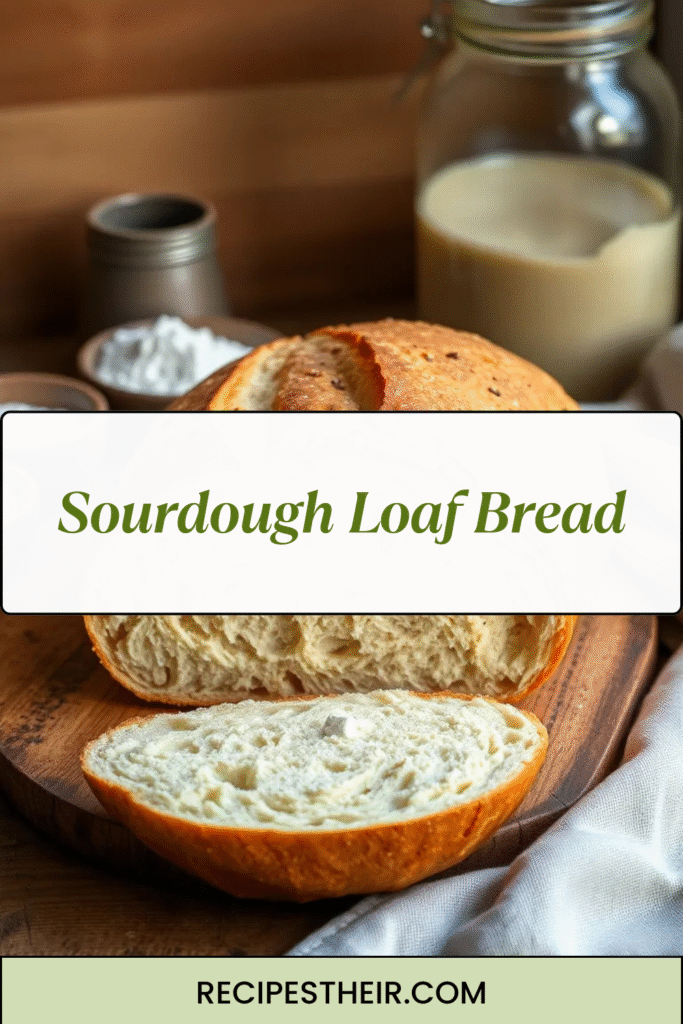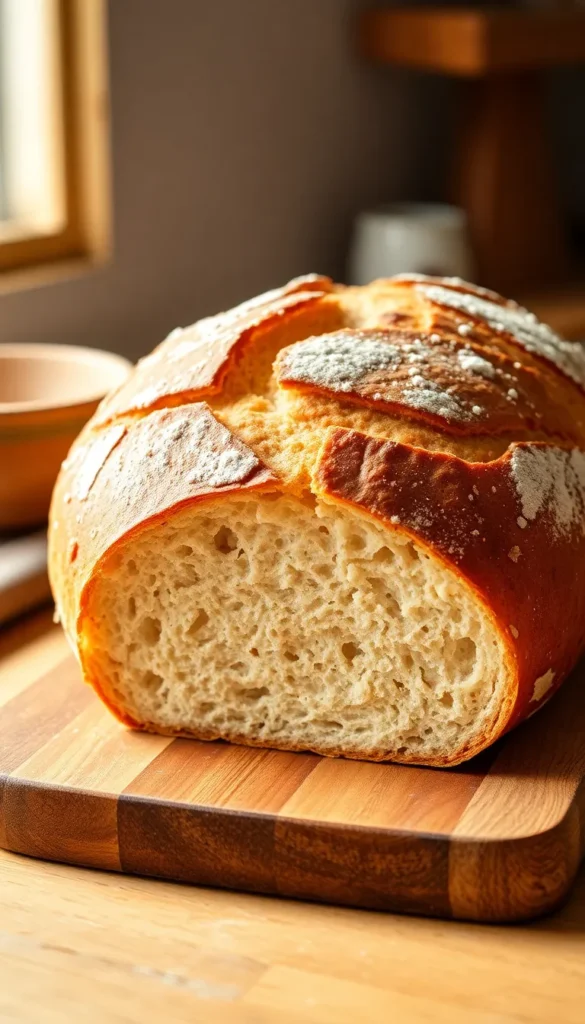The Ultimate Guide to Baking the Perfect Sourdough Loaf Bread
Sourdough loaf bread has seen a remarkable rise in popularity over recent years, and it’s easy to understand why. Its tangy flavor, chewy texture, and golden crust make it a favorite among home bakers and professional chefs alike. Unlike commercially produced bread, sourdough loaf bread relies on natural fermentation, which gives it a unique depth of flavor and several health benefits.
If you’ve ever wanted to master the art of making sourdough loaf bread at home, this guide will walk you through everything—from understanding sourdough starter to baking techniques and expert tips.

What Is Sourdough Loaf Bread?
Sourdough loaf bread is a type of bread made through natural fermentation using a sourdough starter, a mixture of flour and water that has captured wild yeast and beneficial bacteria from the environment. Unlike bread made with commercial yeast, sourdough undergoes a slower fermentation process, which develops its signature tangy flavor and chewy texture.
Sourdough loaf bread isn’t just delicious—it’s also more digestible. The natural fermentation helps break down gluten and phytic acid, making it easier for some people to tolerate. Additionally, sourdough has a lower glycemic index compared to regular white bread, making it a better choice for maintaining stable blood sugar levels.
Ingredients You Need for Sourdough Loaf Bread

To make the perfect sourdough loaf bread, you don’t need a long list of ingredients. Here’s what you’ll need:
- Sourdough starter: The star of the show. A healthy, active starter is essential for a successful loaf.
- Bread flour: High-protein flour helps create strong gluten, giving your bread its chewy texture.
- Water: Preferably filtered or non-chlorinated to avoid interfering with fermentation.
- Salt: Enhances flavor and strengthens the dough.
Optional additions can include whole grains, seeds, or herbs for extra flavor and texture.
How to Make a Sourdough Starter
Before you can bake a sourdough loaf bread, you need a starter. Here’s a simple method to make one from scratch:
Ingredients:
- 1/2 cup whole wheat flour
- 1/2 cup water (room temperature)
Instructions:
- Mix the flour and water in a glass or plastic container until smooth.
- Cover loosely with a cloth or lid and let it sit at room temperature.
- Feed the starter daily with equal parts flour and water.
- After 5–7 days, your starter should be bubbly and have a pleasant, tangy aroma—ready for baking!
Tip: Use the starter when it has doubled in size and is at its peak activity for the best rise in your sourdough loaf bread.
Step-by-Step Sourdough Loaf Bread Recipe

Here’s a detailed recipe to create a classic sourdough loaf bread at home.
Ingredients:
- 1 cup active sourdough starter
- 3 cups bread flour
- 1 cup water (room temperature)
- 1 1/2 tsp salt
Instructions:
1. Mix the Dough
In a large mixing bowl, combine the sourdough starter and water. Stir until the starter dissolves. Gradually add the flour and mix until a sticky dough forms. Let the dough rest for 30 minutes (autolyse) to allow the flour to fully hydrate.
2. Add Salt and Knead
Sprinkle salt over the dough and knead it gently in the bowl. You can use a folding technique: stretch one side of the dough and fold it over, rotate, and repeat for 5–10 minutes. The dough should become smooth and elastic.
3. Bulk Fermentation
Cover the dough and let it rise at room temperature for 4–6 hours, depending on the activity of your starter. During this time, perform stretch and folds every 30 minutes for the first 2 hours to strengthen the dough.
4. Shape the Loaf
Turn the dough onto a lightly floured surface and shape it into a tight ball or oval. Place it in a floured proofing basket or bowl lined with a floured cloth.
5. Final Proof
Cover and let the dough rise for another 1–2 hours, or refrigerate overnight for enhanced flavor.
6. Score and Bake
Preheat your oven to 450°F (230°C) with a Dutch oven inside. Once hot, carefully transfer your dough into the Dutch oven, score the top with a sharp knife, cover, and bake for 20 minutes. Remove the lid and bake for an additional 20–25 minutes until the crust is golden brown.
7. Cool Before Slicing
Let the sourdough loaf bread cool completely on a wire rack before slicing. This allows the interior to set properly and develop the ideal crumb.
Tips for the Perfect Sourdough Loaf Bread
- Use high-quality flour – The better the flour, the stronger your gluten structure and flavor.
- Maintain a healthy starter – A happy starter produces the best rise and tangy flavor.
- Don’t rush fermentation – Slow fermentation develops complex flavors.
- Use steam – Baking with steam in the first 20 minutes helps achieve a crispy crust.
- Practice scoring – Proper scoring directs the expansion of the loaf and gives it a professional look.
Common Mistakes to Avoid
- Underproofing: Dough that hasn’t risen enough will produce a dense loaf.
- Overproofing: Dough left too long may collapse in the oven.
- Weak starter: Using a starter that isn’t active enough leads to poor rise.
- Incorrect hydration: Too much or too little water can affect the texture and crust.
Variations of Sourdough Loaf Bread
Sourdough loaf bread can be customized in many ways:
- Whole Wheat Sourdough: Replace part of the flour with whole wheat for a nuttier flavor.
- Seeded Sourdough: Add sunflower seeds, flaxseeds, or pumpkin seeds for extra texture.
- Herb Sourdough: Incorporate rosemary, thyme, or garlic for savory notes.
- Spelt or Rye Sourdough: Experiment with alternative flours for unique flavors.
Health Benefits of Sourdough Loaf Bread
Sourdough isn’t just delicious—it’s also beneficial for health:
- Easier digestion: Natural fermentation reduces gluten content and phytic acid.
- Rich in probiotics: Fermentation encourages beneficial gut bacteria (when consumed fresh).
- Lower glycemic index: Helps in controlling blood sugar spikes.
- Nutrient absorption: Fermentation increases bioavailability of minerals like iron and magnesium.
Storing Your Sourdough Loaf Bread
- At room temperature: Wrap in a cloth or paper bag for up to 3 days.
- Freezing: Slice and freeze for up to 3 months. Toast slices directly from the freezer.
- Avoid refrigeration: Refrigeration dries out sourdough and affects its texture.
Why Make Sourdough Loaf Bread at Home?
Baking your own sourdough loaf bread is rewarding in more ways than one. You control the ingredients, ensuring no preservatives or artificial additives. The process itself can be meditative, and there’s nothing quite like the aroma of freshly baked sourdough filling your kitchen.
Homemade sourdough also allows endless customization—from experimenting with grains and seeds to adding fruits and herbs. Each loaf is unique, reflecting your personal touch.
Conclusion
Making sourdough loaf bread at home may seem intimidating at first, but with patience and practice, it’s entirely achievable. From cultivating a healthy starter to mastering fermentation and scoring, each step contributes to a flavorful, tangy loaf with a perfect crust.
Whether you enjoy it fresh for breakfast, as a sandwich, or toasted with butter, sourdough loaf bread is a versatile and rewarding staple. By following this guide, you’ll gain the knowledge and confidence to bake your own artisan-quality bread that rivals any bakery.
Start today, and experience the joy of creating your very own sourdough loaf bread—a timeless classic that never goes out of style.





